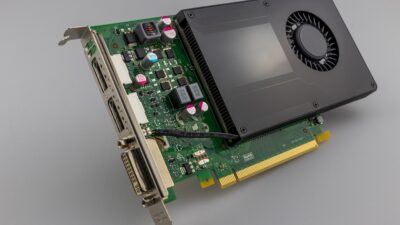In the fast-evolving landscape of gaming technology, the role of graphics cards cannot be overstated. As the visual fidelity of games continues to improve, AMD (Advanced Micro Devices) has positioned itself as a formidable player in the graphics card market. Its Radeon series has not only pushed boundaries in performance but has also significantly influenced the gaming industry as a whole.
1. Competitive Pricing and Accessibility
One of AMD’s most profound impacts is its commitment to providing high-performance graphics solutions at competitive prices. Historically, AMD has offered price-to-performance ratios that appeal to a wider audience, including casual gamers and those on tighter budgets. This approach has democratized access to high-quality gaming experiences, challenging competitors like NVIDIA to reassess their pricing strategies.
AMD’s undercuts have encouraged more gamers to upgrade their systems, resulting in a broader adoption of higher graphical settings across multiple platforms. The affordability of AMD graphics cards has enabled many to enjoy demanding titles that may have been financially prohibitive otherwise.
2. Technological Advancements
AMD has been at the forefront of several technological innovations that have reshaped the gaming experience. The introduction of features like FreeSync technology allows for tear-free gaming experiences by synchronizing the refresh rate of the monitor with the graphics card’s output. This eliminates screen tearing and results in smoother gameplay, which is particularly beneficial in fast-paced titles.
Similarly, the RDNA architecture has significantly enhanced power efficiency and performance. By optimizing the GPU architecture, AMD has managed to produce graphics cards that perform exceptionally well while consuming less power—a crucial factor for gamers concerned about energy costs and heat management in their systems.
3. Support for New Standards
As the gaming industry continually adapts to new standards, AMD has positioned itself as an advocate for cutting-edge technologies. The introduction of Ray Tracing and Variable Rate Shading (VRS) is a testament to this commitment. While NVIDIA was the first to market with ray tracing, AMD soon followed, with its RDNA 2 architecture allowing for similar features.
This strategic alignment with new graphical standards has prompted game developers to incorporate these features into their titles, thereby elevating the overall visual quality and immersion of gameplay.
4. Engagement with Developers and Open-Source Philosophy
AMD has actively engaged with game developers, fostering an environment where both parties can collaborate to optimize games for their hardware. The company’s open-source approach, particularly with its AMD GPU drivers, allows developers to modify and adapt the technology to fit their needs.
This collaboration has led to enhanced performance and stability in games optimized for AMD graphics cards, all while advocating for a community-driven development ecosystem that empowers developers.
5. Gamers’ Community and Esports
The impact of AMD’s graphics cards extends into the gaming community and esports. By endorsing and sponsoring events, AMD has not only strengthened the brand’s connection with gamers but also reinforced the growth of competitive gaming.
Prominent esports teams utilizing AMD hardware showcase the capabilities of their products in high-stakes environments, further solidifying their reputation for reliability and performance. This visibility not only enhances brand loyalty but also encourages budding gamers to invest in AMD technology as they embark on their gaming journeys.
Conclusion
The impact of AMD graphics cards on the gaming industry transcends mere hardware specifications. From affordable yet high-performance products to groundbreaking technological developments and community engagement, AMD has played an instrumental role in driving the gaming industry forward. As the demand for stunning visuals and smoother gameplay continues to grow, AMD’s contributions will undoubtedly shape the future of gaming, ensuring that players can enjoy immersive experiences without sacrificing accessibility. Whether through price, technology, or community initiatives, AMD stands as a pillar of innovation in the vibrant world of gaming.

